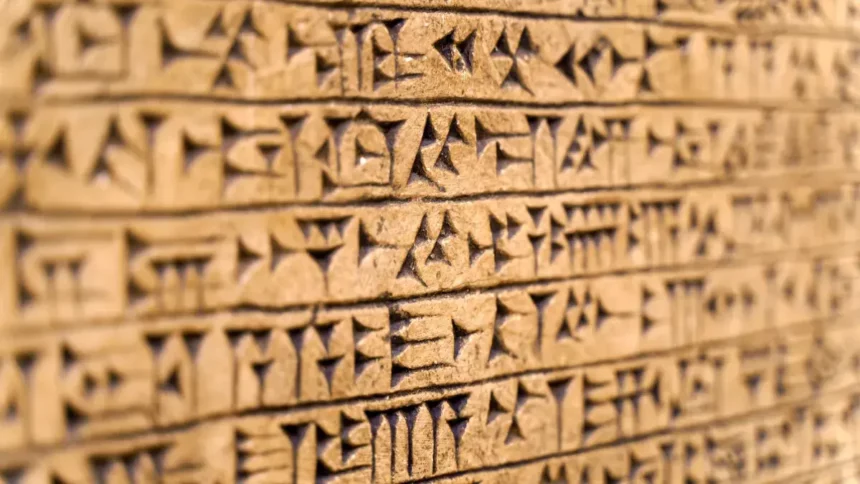The Pythagorean theorem is a fundamental concept in geometry that most people encounter during their school years. It states that in every right-angled triangle, the sum of the squares of the lengths of the other two sides is equal to the square of the length of the hypotenuse, often expressed as a^2 + b^2 = c^2.

However, what many may not realize is that this theorem is not the original work of Pythagoras. Its discovery predates him and can be traced back to the ancient Babylonians. An ancient tablet known as YBC 7289, found in southern Iraq, contains mathematical proof of the Pythagorean theorem. It is estimated to have been created between 1800 and 1600 BC, making it much older than Pythagoras himself. This historical artefact is currently housed at the Institute for the Preservation of Cultural Heritage at Yale University in the United States.
Another piece of evidence supporting the theorem’s ancient origins is tablet IM 67118, dated to 1770 BC. This tablet includes text, diagrams, and aids for determining the area of a rectangle and the length of its diagonal, all of which involve the use of the Pythagorean theorem.

Moreover, the theorem was also known in ancient India and can be found in the Vedic Sanskrit text called Sulbasutra, authored by Baudhāyana around the eighth century BC. In China, it was known as GouGu. Some scholars even suggest that the theorem’s origins might reach back further in history, possibly dating as far back as 2000 BC when it could have been passed down through oral tradition.
Upon further examination of a study conducted in 2009, it was revealed that the ancient Babylonians possessed knowledge of what we now refer to as the Pythagorean theorem, although it was not known by that name at the time. The theorem was eventually named after Pythagoras, a Greek mathematician who lived approximately 2,500 years ago.

Bruce Ratner, a mathematician, wrote in the paper: “The conclusion is inescapable. The Babylonians knew the relation between the length of the diagonal of a square and its side: d=square root of 2.”
“This was probably the first number known to be irrational. However, this in turn means that they were familiar with the Pythagorean Theorem – or, at the very least, with its special case for the diagonal of a square (d^2 = a^2 + a^2 = 2a^2) – more than a thousand years before the great sage for whom it was named.”
“Moreover, out of respect for their leader, many of the discoveries made by the Pythagoreans were attributed to Pythagoras himself; this would account for the term ‘Pythagoras’ Theorem,’” said Ratner.








